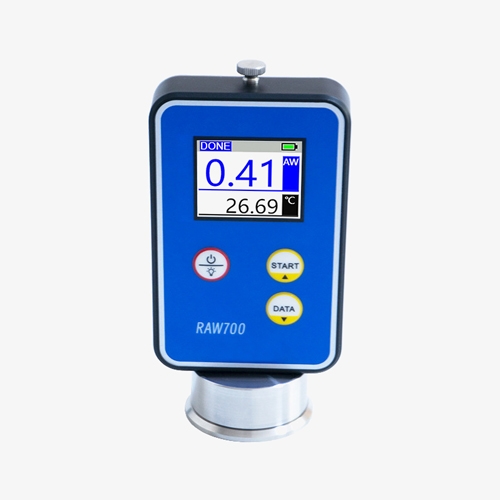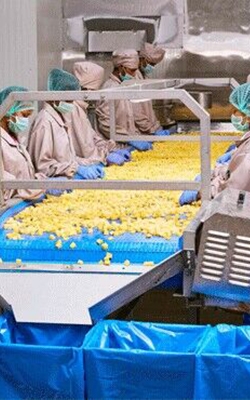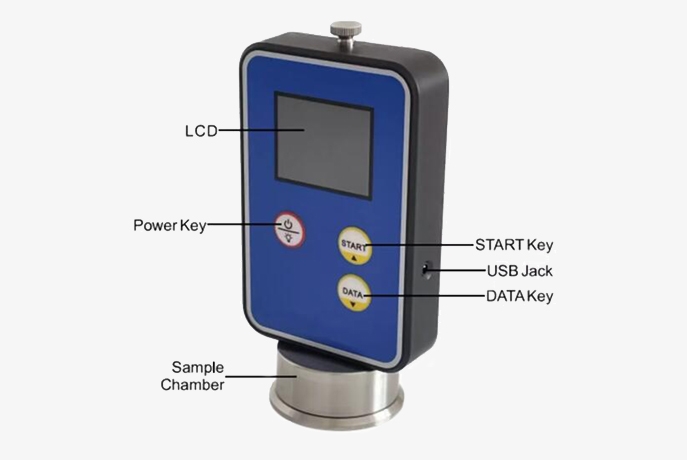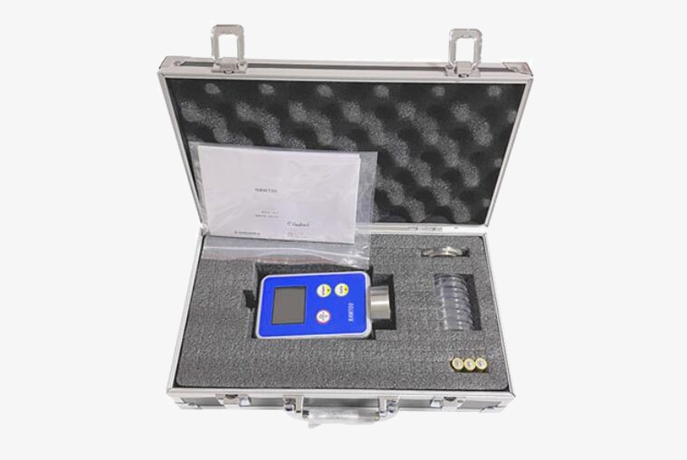By measuring the water activity of food and selecting reasonable packing and storage methods, the use of preservatives can be reduced and the shelf life of food, grain and fruits andvegetables can be judged.

Auto Shutdown and Non-Conductive Sensor for Accurate Readings
- Auto shutdown function: Automatically shut down after 10 minutes of inactivity.
- Use a non-conductive humidity sensor to ensure accurate readings without interference from the product's conductivity.

Smart Data Storage with 99 Sets and Auto-Retention of Measurement Results
- Automatically store measured values: The smart aw meter can store 99 sets of data automatically for easy measurement.
- Three measurement states: After the measurement is completed, the water activity value and sample temperature value are automatically maintained.

Adjustable LCD displays water activity and temperature for easy monitoring
- High-definition LCD display with 2 levels of brightness adjustment.
- Easy-to-read interface, displaying both water activity and sample temperature simultaneously, enhances visibility, making it easier to monitor crucial data at a glance.
Applications
SISCO smart portable water activity analyzer is capable of measuring the water activity of solid (powder, granules, blocks), liquid, and paste samples. It is primarily used to determine the available water that microorganisms can utilize or engage in chemical reactions in a state of equilibrium, as well as the product’s stability and microbial reproduction ability. It is widely applied in food processing, feed production, chemical pharmaceuticals, and scientific research.

Feed Production

Chemical Pharmaceuticals

Scientific Research

Food Processing
| Model | SISCO-WAM-RAW700 |
| Display | Color LCD |
| Sensor | Non-conductive humidity sensor |
| Range | 0.00~1.00aw |
| Accuracy | ±0.02aw |
| Resolution | 0.01 |
| Measuring Time | 5 Minutes (General Sample) |
| Storage | 99 Groups (Automatic Storage) |
| Automatic Power Off | 10 Minutes (Inactivity) |
| Operating Conditions | Temperature: 0~50°C; Humidity: 0~80%RH (No Condensation) |
| Storage Conditions | Temperature: -10~60°C; Humidity: 0~90%RH (No Condensation) |
| Power Supply | 3×1.5V AAA(UM-4) Battery (NOT INCLUDING) |
| Size | Main unit: 75×23×151mm |
| Sample cup: φ35mm | |
| Weight | 290g |
Details

Packing List
- 1 x Water activity meter
- 1 x Packing box
- 1 x User manual
- 5 x Sample cup

Q1: What is the ideal water activity for food products?
A1: The ideal water activity for food products varies depending on the type of food, but generally, keeping water activity below 0.85 is essential to prevent the growth of harmful bacteria, including pathogens like Salmonella and E. coli. Most bacteria require a water activity level above 0.91 to thrive, while molds and yeast can grow at levels around 0.80. For shelf-stable foods, such as dried fruits, jerky, and baked goods, maintaining a water activity level between 0.60 and 0.70 is optimal to ensure freshness and inhibit spoilage while maintaining texture and flavor.
Q2: What ingredients reduce water activity?
A2: Ingredients that reduce water activity are those that bind or trap water, making it unavailable for microbial growth. Common ingredients used to lower water activity include salts, sugars, and glycerol. Salt works by drawing out moisture through osmosis, which lowers the available free water in a product. Sugars, such as sucrose and fructose, are hygroscopic and bind to water molecules, reducing water activity. Glycerol and other humectants also retain moisture while preventing it from being accessible for microbial activity. These ingredients are widely used in processed foods like jams, cured meats, and baked goods to extend shelf life and maintain product safety.
Q3: Can a water activity meter be used for liquids and solids?
A3: Yes, a water activity meter can be used for both liquids and solids, as long as the sample can achieve equilibrium with the air in the meter's chamber. For solids, the meter measures the free water present in the material, such as in baked goods, dried fruits, or jerky. Liquids, like sauces or jams, can also be measured by assessing the water activity in their composition. The meter effectively evaluates any substance where free water is present, regardless of its physical state, making it a versatile tool for ensuring food safety and quality control in a wide range of products.
Tips: How does a water activity meter work?
A water activity meter works by measuring the equilibrium between the vapor pressure of water in a food sample and the vapor pressure of pure water. The sample is placed inside a sealed chamber, where the free water in the sample begins to evaporate, creating moisture in the airspace above it. The meter then senses the relative humidity of this airspace, which is directly proportional to the water activity of the sample. This reading is typically expressed as a value between 0 and 1. Advanced meters may use different methods like dew point measurement or capacitance sensors to detect humidity, providing fast and accurate assessments of water activity, which is crucial for determining food stability and safety.
Thank you for buying industrial test and measurement equipment on SISCO.com, all products sold by SISCO and the partner cover a 12 months warranty, effective from the date of receiving the products.
What is covered?
SISCO is responsible for providing free spare parts, and free technical support to assist the customer to repair the defective products until the problem is solved.
What is not covered?
- Product purchased from anyone other than a SISCO store or a SISCO authorized reseller.
- Expendable parts.
- Routine cleaning or normal cosmetic and mechanical wear.
- Damage from misuse, abuse or neglect.
- Damage from use of parts other than SISCO approved.
- Damage from use outside the product’s usage or storage parameters.
- Damage from use of parts not sold by SISCO.
- Damage from modification or incorporation into other products.
- Damage from repair or replacement of warranted parts by a service provider other than a SISCO authorized service provider.
- Damage caused by the application environment not meeting the product usage requirements and the failure to perform preventive maintenance.

